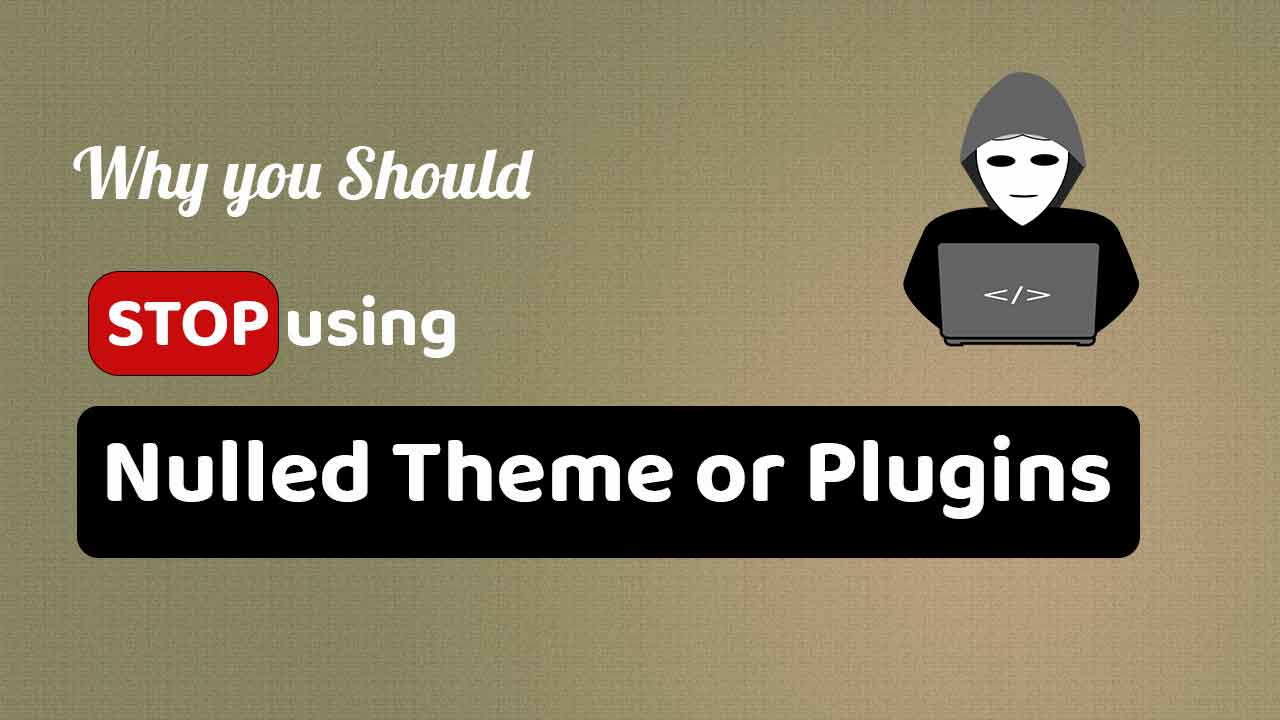Do you start a new blog and want to build a career in blogging? And you choose WordPress CMS for blogging? And now you want to design your WordPress website or enhance SEO using premium plugins and looking toward nulled themes and plugins? This article will discuss the Nulled themes and plugins and why you should or shouldn’t install such items.
What are the Nulled Themes and Plugins?
Nulled themes or plugins are the pirated version of premium themes that are available illegally on the internet. Some website provides these plugins free of cost and other with a minor fee. So you can download these plugins and themes and enjoy all the premium features.

Some folks distribute these themes on their websites, telegram groups, and other social media platforms. According to such websites, WordPress is an open-source platform, and its themes and plugins come under GPL or General Public License. According to this license, you can create, modify and distribute any WordPress theme or plugin.
Security of the Website
There is nothing free in this world. There is a hidden moto behind everything in the world. So why do some people work hard on cracking the theme codes? Every developer of the theme or plugin gives their best to protect work.
But people spend time, crack the application, and provide a hundred-dollar theme or plugin free of cost.
Do you ever think why they do so? For example, they may take some charge of their work. Or include a malicious code and provide the software free of cost. And the website on which they use will pay back to them.
If you’re using a nulled theme or plugin, you’ll never know that the website is under the 3rd party’s control because hackers will not take over in the initial stage.
You can also scan a nulled product for viruses using virustotal.com.
Case Study: One of my friends, who started blogging with me, used a pirated theme on his WordPress website. He was working on the education niche. One day he called me and asked for help. On his website, there is some adult content posted.
The suspicious blog post was visible to users, but there was no blog post when we logged in to the dashboard. Then I login into the database, and it was tough to find the infected part of the database. It took almost more than 8 hours to remove the malicious code from the website.
The problem here is that Google indexes every post from that website within 5 minutes after publishing it. Now Google may consider the website no longer provides quality content, results downgrading PageRank or Authority of the Website.
User’s Privacy at Risk
You put your website at risk by using nulled software and the users of the website. For example, for a regular blog, you may collect the email addresses of the users to provide a valuable service to them. But in parallel nulled theme is taking away all these email contacts.

And hackers can use these emails and the personal information of the user for illegal activities.
For a WooCommerce website, this situation becomes more worst. Malicious software can take away card information and can make unauthorized payments.
Harmful for SEO
When you use nulled themes or plugins, they may change the essential features of the plugin or theme. Like there may be a condition defined for organic traffic. It may ask the visitors to enable notification for your website and notify the nulled theme creator.
Such software generates harmful links in the content to drive traffic from your website. You may or may not detect such links, but sooner or later, Google detects such links and punishes the website by deindexing it.
- You may lose ranking of your article,
- Infected software can generate unknown or harmful external links in the blogpost,
- Users may redirect to any other website,
- can cause slow website speed.
Search engines like Google and Bing quickly detect such activity and degrade your website’s ranking or altogether remove the website from search results.
It may take months to get again on the same ranking position, or sometimes you’ve to start a new blog from scratch.
No Updates from the developer.
Nulled themes or plugins can’t get updates from the developer. And if there is a critical security update, you may miss that, leading to a website hack or malfunctioning. Some website includes updates for one year or lifetime. But whom can you trust?
If everybody downloads the nulled version of the application, the developer doesn’t get the expected results. In such a case, the developer may abandon the project.
When to use Nulled themes or Plugins?
You shouldn’t use the nulled products on your website. But there are some conditions in which you can use nulled themes or plugins; these are
- If the developer does not provide a trial or free version of the software, you can use nulled product to check how the product can be helpful.
- You should use such products on localhost while designing your website.
Please note that you can use such products on offline projects like WordPress on localhost but not on live projects because nulled products may include viruses or suspicious codes and are injected on live projects. And if you use the nulled products on offline projects, then please remove all such items before making it live.
You can try the features of the product on a test localhost website.
Conclusion
Nothing is free in this world. We advise you not to use nulled products on a live project.
I hope you liked this article on nulled themes and plugins. In case of any doubt, feel free to ask in the comment section provided below.